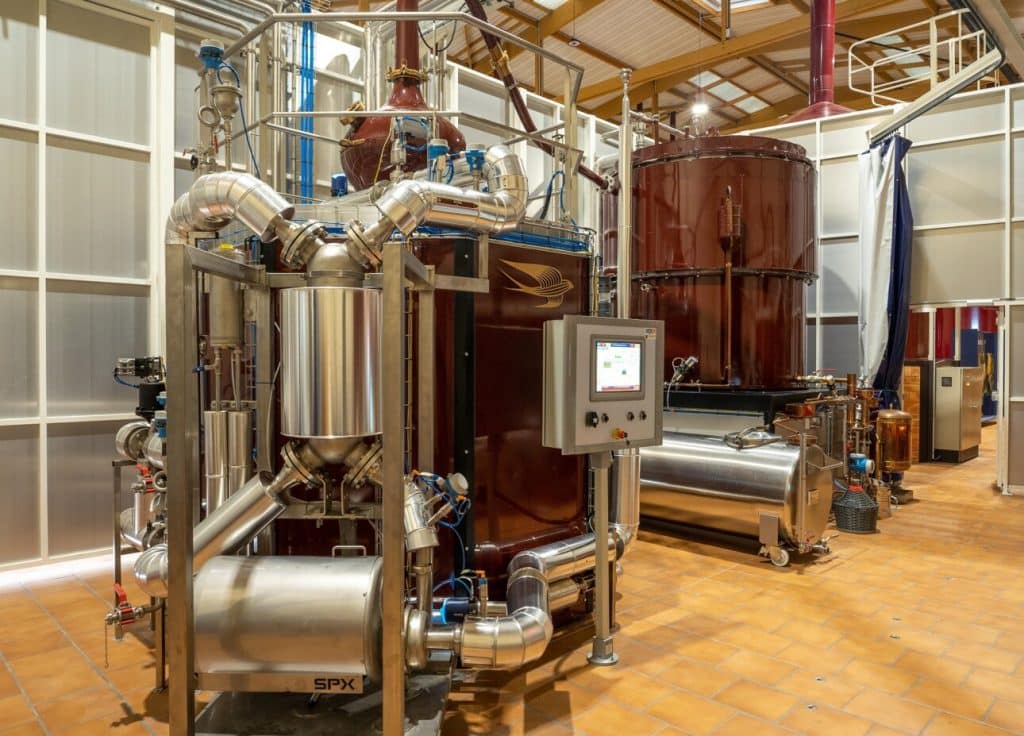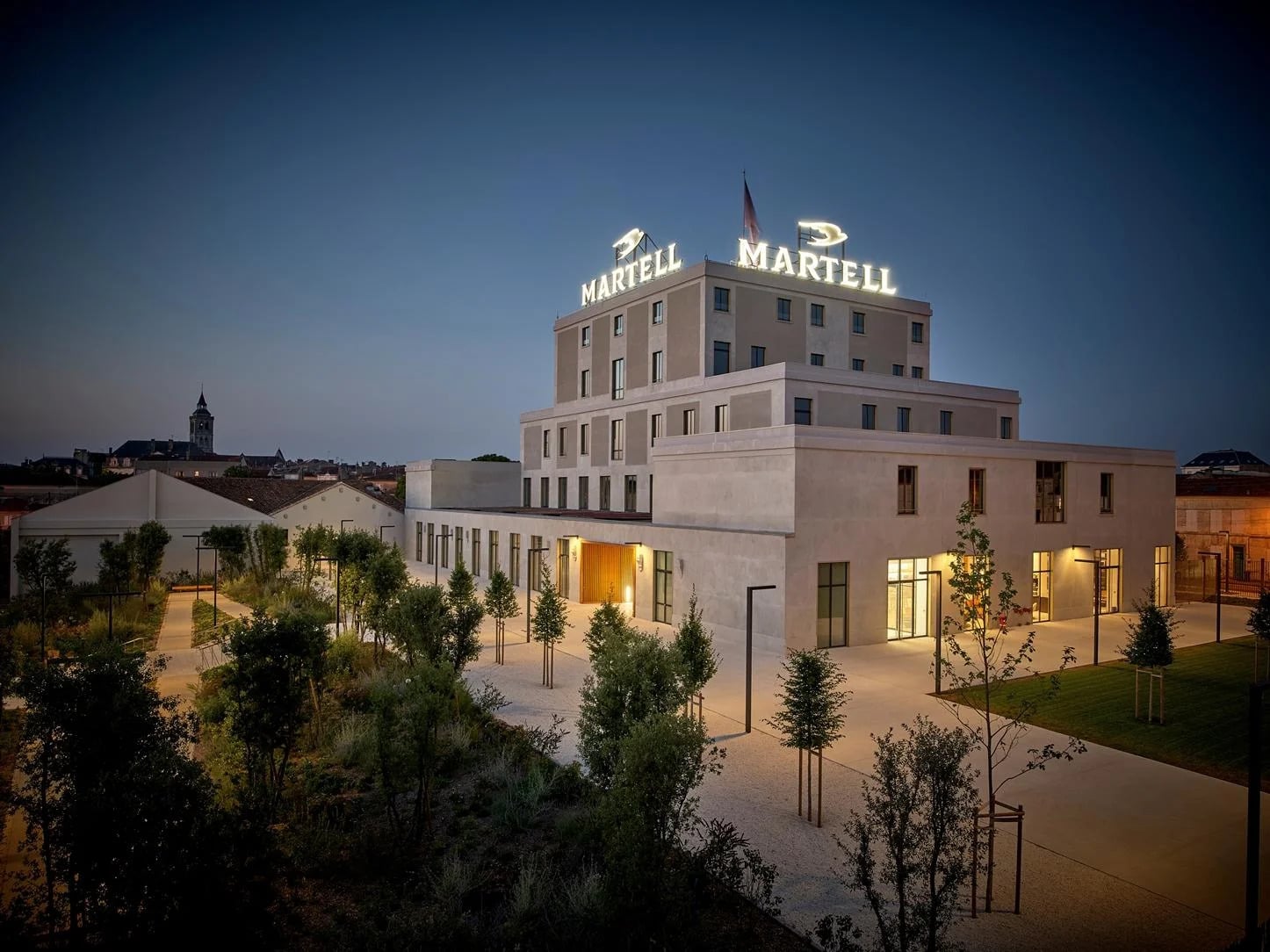After years of work, the Martell cognac house has announced the success of its new distillation method. With very little carbon emissions, the innovation meets environmental challenges, but it will take a few years before it becomes widely available.
Martell, the flagship of the Pernod-Ricard group, has announced the success and efficiency of its latest innovation, low carbon distillation. This is a process that improves on a first experimental steam distillation device, tested since 2019.
The innovation lies in a “system of recovery and recovery of energy” in the refrigerating part of the still. The alcohol vapors condense in a coil immersed in cold water. Usually, this step results in a significant loss of energy due to evaporation and the formation of fumaroles. But here, the heat flow is recovered by a heat pump, before being reintroduced into the alternative steam heating system.

“For the first time, the Charente still is able to meet the environmental challenges that France and Europe have set for 2050”, say Christophe Valtaud, cellar master at Martell, and Philippe Tizon, CEO of the Chalvignac group.
First test
The Bureau National Interprofessionnel du Cognac (BNIC) had indeed launched a call for a “sustainable distillation” project for cognac in 2019, to reduce greenhouse gas (GHG) emissions related to the distillation phase.
“By 2030, we must reduce our GHG emissions by 40%, and also our consumption of primary fossil fuels, of which gas is a part”, Christophe Valtaud had explained at the time.
[arm_restrict_content plan=”1,” type=”show”]
Martell had therefore studied a steam distillation system, an experimental process without gas or flame, but with water superheated by an electric boiler.
A perfected process, and one that can be perfected
The first eaux-de-vie thus produced, tested at the Boinaud distillery for Rémy Martin and Hennessy, were analyzed and tasted by a panel of experts. Their organoleptic characteristics were then declared to be in conformity with expectations.
After five years of research, the initial results are encouraging. However, there is still a long way to go before this process becomes more widespread. If the cognac industry approves it, mass production could be possible before 2030, if it is accepted by the cognac industry. Especially as this technology can be adapted to any 20 hectoliter still, a classic fermentation tank. It will also be possible to submit the process to the National Institute of Origin and Quality (INAO) in order to register it, but the administrative procedures should take one or two years.
[/arm_restrict_content]
[arm_restrict_content plan=”1,” type=”hide”] [elementor-template id=”101048″][/arm_restrict_content]
Read also >Wines and spirits : French exports soar in value in 2022
Featured photo : © Pernod-Ricard









